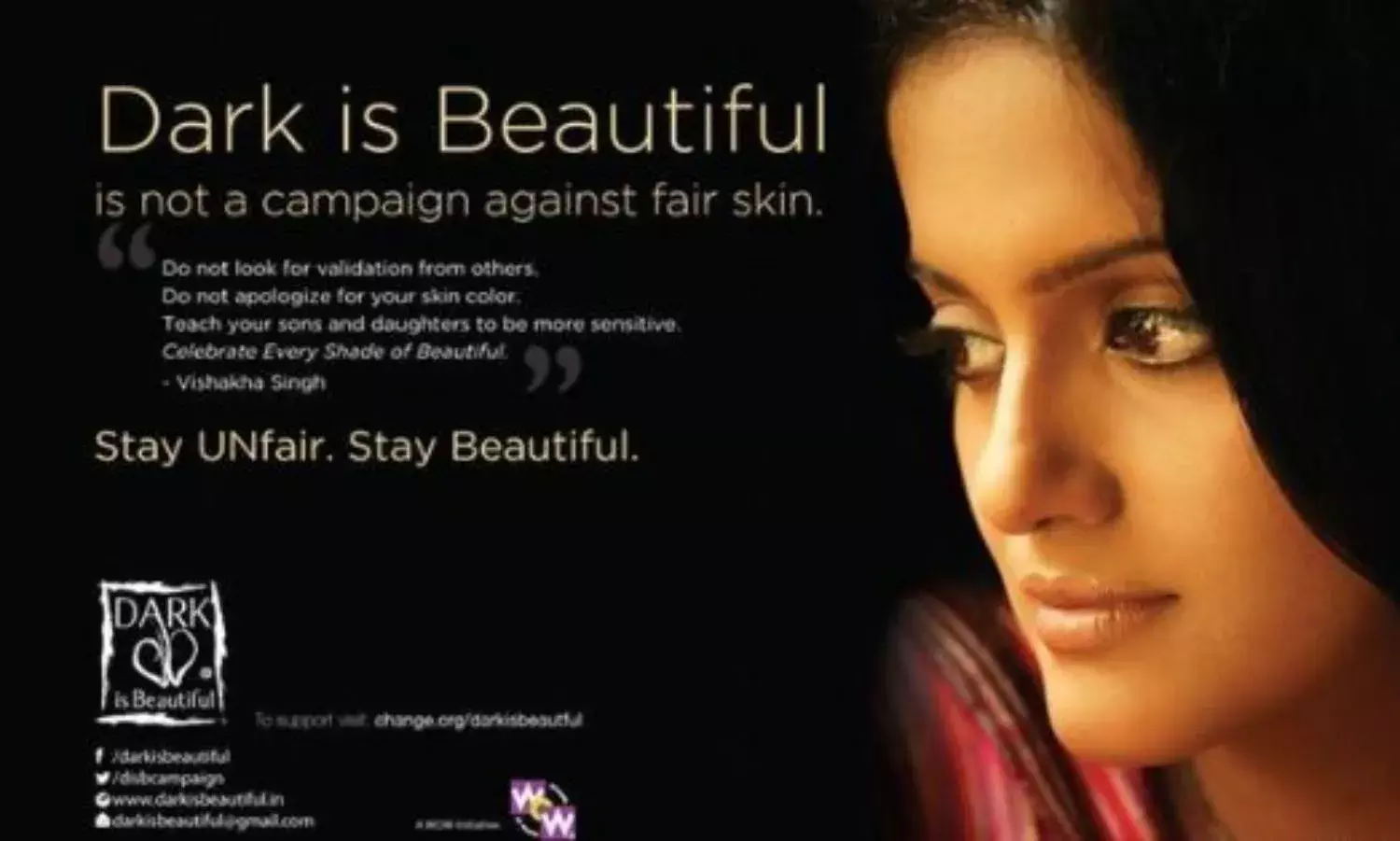‘Fair’ Becomes ‘Glow’ As Colour Bias is Called Out
SHOMA A.CHATTERJI

All of a sudden, the slogan “Black Lives Matter” grew into a global movement with loud and violent protests against the brutal killing of African-American by white police officers in the United States.
The world wide protests drew blood with even Hindustan Levers here in India finally removing the word ‘fair’ from its infamous Fair and Lovely skin cream, and replacing it with the word ‘glow.’
That Indian society has a deep ingrained bias for fair complexion, especially for women, is well known. In fact even documented through court judgements.
On Friday, April 6, 2008, a Supreme Court Bench of Justices Altamas Kabir and J.M. Panchal created history by sentencing one Farook Batcha to two years of imprisonment for driving his wife Syed Fathima to suicide by taunting her all the time about her ‘dark’ complexion.
For the first time, the apex court of the country showed marked sensitivity towards a bias that is so much a part of social conditioning that it is accepted as normal social behaviour.
In 2003, the Union Ministry of Information and Broadcasting came down with a sledgehammer on advertisements promoting the sale of complexion creams on Doordarshan. While one of these offensive ads showed a father expressing his regret for having sired a dark-skinned daughter who cannot get a job cushy enough to support him, the other showed how a particular fairness cream could change the horoscope-defined destiny of another dark-skinned girl whose marriage was being negotiated by her parents.
The former girl applied a fairness cream and got herself the job of an air-hostess. The other girl read all about fairness creams in ancient scriptures, picked a cream supposedly rooted in these scriptures and lo and behold, she met her dream man on the streets one morning and the horoscope could go to hell! This ad set out rightly to demolish one myth –astrology as the key to happiness - only to wrongly create another – a fair skin can get you your Prince Charming.
In 1998, Meena Kaushik, a Bangalore-based market researcher who studied the skin-whitening market in Asia said that culturally, fair skin is associated with positive values that relate to class, lifestyle and beauty. Opponents of the skin-whitening industry continued then and now to fight against this concept.
Right through Asia, a dark skin, especially for women, is linked to the toil and sweat of hard labour while a fair skin is associated with a genteel, upscale lifestyle.
Historians and social anthropologists insist that in India at least, the racial mindset is rooted in the caste system where fair skin is ‘Brahmin’ while the dark skin is ‘Shudra’. A bias woven into the social structure that has remained more or less intact, with intolerance and prejudice as its core.
It is also a colonial hangover, a psychological effect collectively affecting a group of people conquered throughout their history by fairer folk from Europe and the Middle East. This is precisely why Syed Fathima felt insulted, oppressed and humiliated for being a constant target of mental torture. She mentioned in her dying statement that her husband did not like her because she was ‘dark.’
Advertisers constantly play on the patriarchal theory that to be accepted and recognized, a woman must be fair and beautiful. The two words have become synonyms. If she is not born beautiful, she can become so with the use of an entire range of personal care products the gigantic cosmetic industry floods the market with.
When Fair and Lovely commercials first appeared on our television screens, it positioned itself in a very conservative and traditional milieu. The early ads showed a young girl who wanted to find the right partner. Fair and Lovely gave her ‘fair’ and ‘good’ looks. She was ‘shown’ to the boy and his parents and abracadabra, the negotiation was finalized.
Woman of Worth (WOW) is a movement launched in 2009. Actor-social activist Nandita Das joined in 2013 to make it a dynamic movement to do away with the obsession for fair skin. The campaign clocked 10 years last year and Das celebrated it with a powerful video titled India's Got Colour. This was designed as a predominantly black-coloured theme with an army of celebrities. In tones of clever suggestion, the song reprimanded the audience for its fixation with fairness and the discriminating attitude towards people of colour.
Suparna Trikha, a Delhi-based beautician said, “sixty per cent of the questions to my newspaper column are about getting fairer. A number of them are mothers of teenage daughters. The obsession with fairness has been further perpetuated because of the lack of dark actresses in Hindi films. Apart from Smita Patil, Nandita Das, Kajol and Bipasha Basu there aren’t any who have had a deep impact on the Indian consciousness.”
How dark is ‘dark?’ Isn’t this a subjective response that would differ from person to person, time to time and place to place? Aishwarya Rai is ‘dark’ if she stands next to Julia Roberts. Yet, she is extremely fair beside Bipasha Basu or Nandita Das. Why should the colour of one’s skin be the criterion of evaluating a person, man or woman? Who has the power or the eligibility to make such evaluations on other human beings in the first place? “No one,” says Justices Altamas Kabir and J.M. Panchal, banging their hammers loudly on the table of colour bias in India.



